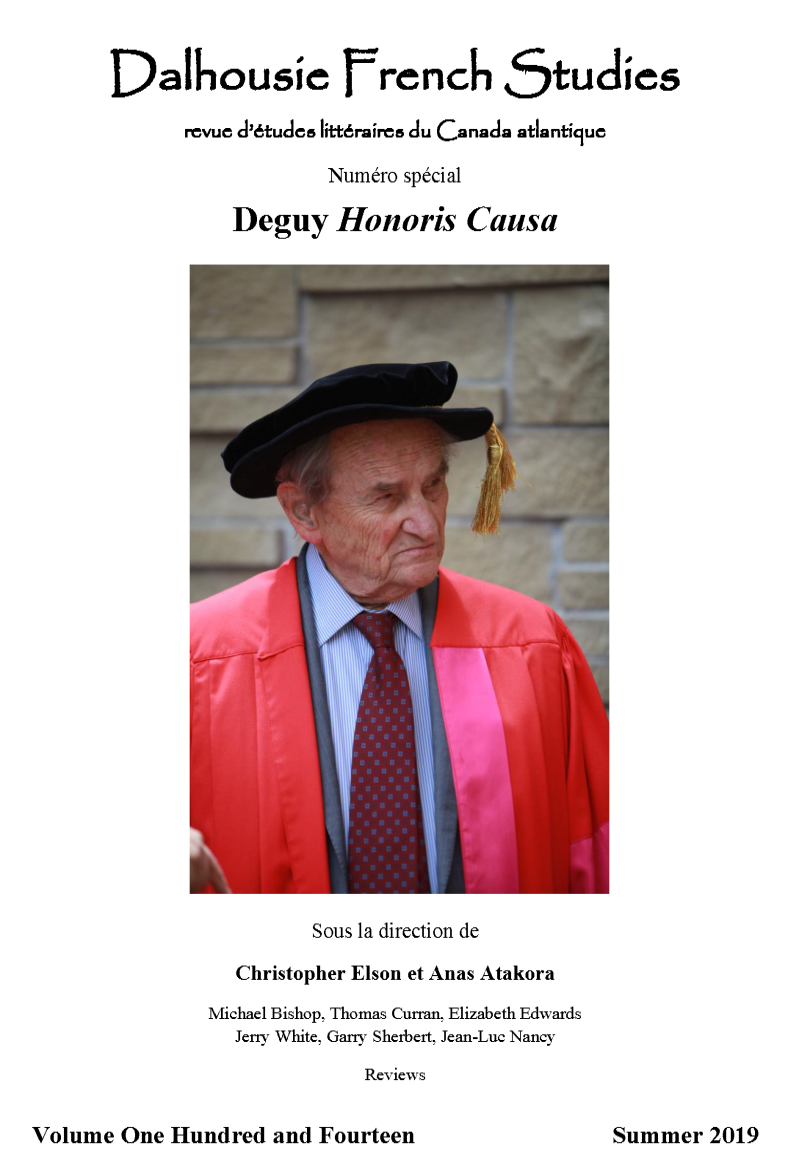La parousie Deguy
Abstract
Ce texte (accompagné de sa traduction anglaise par Richard Rand) relie notre événement du printemps 2016 au colloque d‘octobre de la même année au couvent de La Tourette. Nancy propose une troisième approche de l‘oeuvre et de la figure de Michel Deguy après celles des colloques de L‘Ecole normale supérieure en 1995 et de Cerisy-Lasalle en 2007. Citant abondamment dans l‘oeuvre complète de Michel Deguy, évoquant une rencontre avec une présence qui constamment se dérobe et se re-présente, Nancy souligne ‘l‘asignifiance‘ du nom propre et la difficulté de titrer avant de proposer une méditation, tant érudite et philosophique que personnelle et amicale, sur la possibilité d‘une parousie du comme-si. Il nous présente l‘homme et l‘oeuvre, imbriqués, le penseur et la voix poétique difficilement unis dans une réciprocité de preuves, « présents pour nous vers nous comme si c‘était une même présence pourtant sans cesse au bord de s‘évanouir ». La parousie Deguy, c‘est cette oeuvre parabolique et cet écrivain exemplaire de « l‘être à côté de l‘être—à part, en plus, comme si comme ça. »
« The Deguy Parousia » links our spring 2016 event to the colloquium held in October the same year at the Couvent La Tourette. Nancy proposes his third approach to the work and the figure of Michel Deguy, after those presented at the colloquia of the Ecole normale supérieure in 1995 and of Cerisy-Lasalle in 2007. Quoting abundantly from across the complete works of Deguy, evoking his encounter with a presence that constantly withdraws only to re-present itself, Nancy begins by underlining the ‘a-significance‘ of the proper name and the difficulties of giving a title, before proposing a meditation, both erudite and philosophical and personal and friendly, upon the possibility of a Parousia of the as-if. He gives us the man and the work, interpenetrated, the thinker and the poetic voice united with difficulty in a reciprocity of proofs, “presents himself and the deguy-thought ”¦ one tied to the other and thus to us, thus present for us, towards us as if it were a single presence, yet endlessly at the point of vanishing.” The Deguy Parousia is this parabolic body of work and this exemplary writer of a “being beside being – apart, furthermore, as if as so.”


